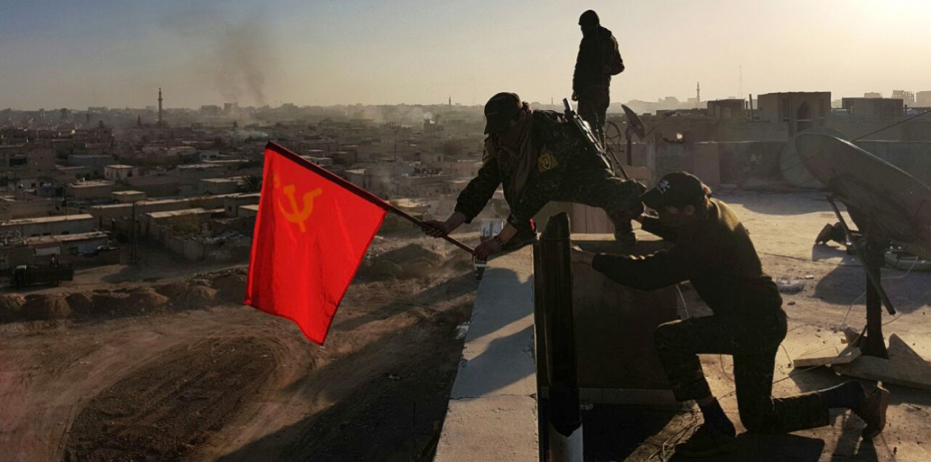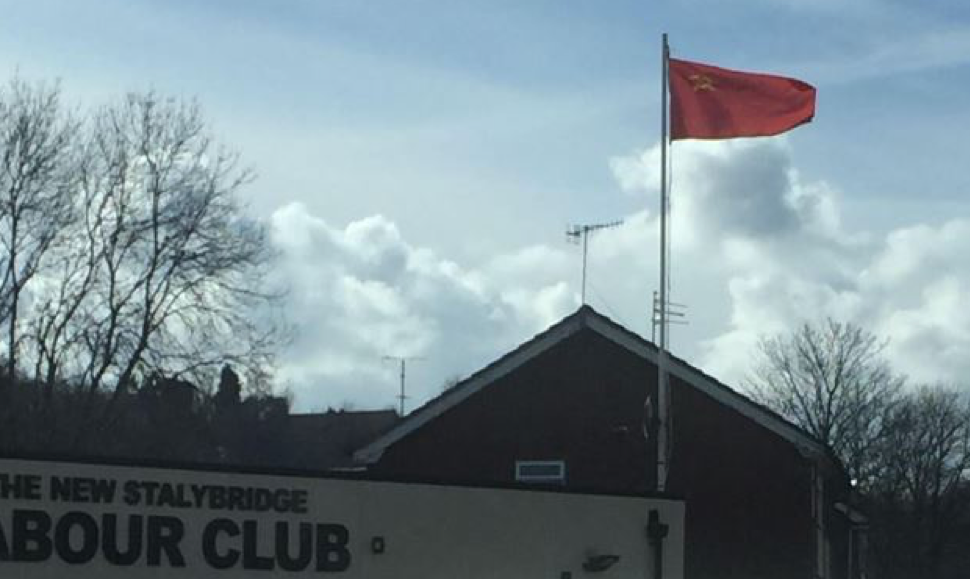Contrasting Evils: The raising of the Soviet flag over the Reichstag building
Written by Etienne DeVilliers, for an assignment on ‘communicating, consuming, and commodifying evil and suffering’, in ANTH424
World War two was one of if not the most costly wars in human history. It has had ongoing significance in global spaces and memory like almost no other event in human history.
The final days of this far-reaching conflict were of particular importance to two groups; the USA and the Soviet Union. In many ways both were trying to present themselves as the hegemonic power of the future [1] with the USA pushing capitalism and the Soviet Union Communism. In particular the “race for Berlin” encapsulates this – with the USA, the French and the British approaching from the western front, and the Soviet Union approaching from the Eastern Front. In many ways, in the closing days of the war the USA were facing two enemies, the remnants of the Axis (in the Japanese and Germans) but also their supposed ally, the Soviet Union [2].

The raising of the Soviet flag over the Reichstag Source: https://en.wikipedia.org/wiki/Raising_a_Flag_over_the_Reichstag#/media/File:Reichstag_flag_original.jpg
An image that encapsulates this complex and nuanced state was the photo of the Raising of the flag of the Soviet Union over the Reichstag building in Berlin in 1945.
Changing meanings, shifting allegiances
The image of the flag on the Reichstag represented different thing to the two hegemonic powers of the USA and the Soviet Union. To the Americans in was a symbol of the raising of a great evil, to the Soviet Union it was a symbol of victory and revenge over an unjust enemy.
The photo itself shows 3 men raising the red flag with the hammer and sickle over the Reichstag surrounded by plumes of smoke. The photographer, Yevgeny Khaldei, stated that he was heavily inspired by the American WWII photograph of the raising of the flag on Iwo Jima, and wished to do something similar. Soviet Union sensitivities meant that Yevgeny Khaldei was not known to be the photographer for many years, the identity of the three men was also unknown until relatively recently.
The imagery present in the photo has shifted meaning drastically over time, as well as having very different meanings within different countries and political alignments.
For the Allies, the Reichstag was in many ways a symbol of their enemy – being in the past the center of German government, the building itself was symbolically constructed to symbolize a unified Germany following its unification in 1871. The Reichstag was covered with statues and images linked to Germany’s mythic past. This highlights the symbolic importance of the Reichstag despite it not being built by the Nazis it reflected much of their ideology. Due to its importance in German history, identity and politics it became a symbol to the allies to – an embodiment of Nazi Germany, and a symbol of what they fought against. This was why the Reichstag was at the center of the Soviet attack on Berlin, despite the fact that it had been a shell of its former self for about 12 years after it was burnt down in 1933.
It was in late April/early May of 1945 that the Reichstag was captured by the ‘red army’ [3]. Many soviet flags were raised on the Reichstag. Out of all the flags raised only one remains in existence today; often referred to as the Victory banner, alluding to the connections of the capturing of the Reichstag and victory within the Soviet mind-set [4]. The victory banner is used at ceremonies commemorating the end of World War 2 and has become of symbol of victory over evil.
Freedom, fascism, and the communist as liberator
Another way that the specific imagery within the photo has be construed by contemporary groups is as a symbol of “Victory over Fascism” by groups such as the international Freedom Battalion (IFB) a far left militant group fighting in places such as Syria against groups such as ISIS [5]. Below is a photograph taken by the IFB in the Syrian city of Raqqa clearly echoing the photo of the Soviet flag on the Reichstag:

The raising of a soviet flag in the Syrian city of Raqqa Source: https://external-preview.redd.it/vFh4-62I3K04F-sgB3qwrxFytHBqY3hK-9BpFYFZbXU.jpg?auto=webp&s=3b37f8dab75a94068502729d08f518d10ae26cbd
To the IFB the photograph represent victory over the evil of facism and as the flag over the Reichstag represented victory over the Nazis the flag in Raqqa to them represents a victory over the Fascism of ISIS [5]. In that regard the Flag raising of the Soviet flag fits into larger trends namely the appeal of experience [7].
This photographic reproduced advances the perception of a continuing tradition of Communists working as liberators. When questioned in regards to the photo these sentiments among IFB members become even clearer “When the red flag flew over Berlin, it was the symbol of victory over nazi-fascism. We consider Raqqa to mean the defeat of Isis-fascism and ourselves to be in the same communist tradition as the liberating troops.”[5]
However, from the perspective of the USA (and many others in the Western block) the image of the communist hammer and sickle on the Reichstag must have seemed an image of two evils: the dying evil of Nazi Germany and the raising evil of the Soviet Union.
We can see this image, showing Soviet Victory over, and the evil it evoked to the Americans, as contributing to the American decision to use the only two nuclear bombs ever used in warfare [2], in Hiroshima and Nagasaki, as a display of strength in the face of their greatest rival, the Soviet Union. Yet this act can be interpreted as evil as well.
Contemporary Controversies
As the power of the Nazis waned and the cold war started with the raising of the iron curtain and the division of Berlin the image of the Soviet flag over the Reichstag would have taken on a whole new meaning, a symbol of a race lost…. as well as a symbol of the division of Berlin, and by extension Europe and the world, into the Eastern block and the Western block, separated by an ‘iron curtain’. Thus it was in the wake of the Cold War that the Soviet flag became to many a symbol of evil in a new way.
This can be seen within contemporary spaces where the Soviet flag no longer commands the political power it once did, it still conveys it. To some it represents liberation and equality but to others it still represents the great other of the Cold War as well as a great evil.
An example of the complex space in which the Soviet flag now sits, its raising at the funeral of a man who had been a communist in Stalybridge, in England in 2019 [6]. From the perspectives of the family it was honoring a relative but to the wider population of the town and wider society it was a brought forth feelings of dismay and outrage [7].

The controversial raising of a Soviet flag at a funeral in Salybridge England. Source: https://twitter.com/guidofawkes/status/972131282644856834
The outcry on social media echoed these sentiments within the population as many considered it inappropriate, following a recent suspected Russian involvement in a nerve gas attack on a journalist. This is due to the intrinsic link the Soviet flag has to Russia, and by extension its connection to the suffering inflicted on people by the Russian state.
The ideas surrounding the two evils present in the photograph of the raising of the flag over the Reichstag have not remained static through history. Rather they have be reshaped by time and by space.
In contemporary Russia the photo is a symbol of righteous revenge, and victory over Nazi Germany. For the USA its meaning has shifted, with the raising of the Iron Curtain and the pressures of the Cold War to come, as a former ally became their greatest enemy. A two very different ideologies clashed, for the USA the Flag of the Soviet Union became an evil as great as the evil incapsulated by the Reichstag itself.
References
- Wallerstein, I., 1993. The world-system after the cold war. Journal of Peace Research, 30(1), pp.1-6.
- Sherwin, M.J., 1995. Hiroshima as politics and history. The Journal of American History, 82(3), pp.1085-1093.
- Hicks, J., 2017. A Holy Relic of War: The Soviet Victory Banner as Artefact. Remembering the Second World War, pp.197-216.
- Tony, L.T.M., 2013. Race for the Reichstag: The 1945 Battle for Berlin. Routledge.
- Oak, G. 2018. A red flag over Raqqa. The Morning star retrieved from: https://morningstaronline.co.uk/article/red-flag-over-raqqa
- Bugby, T. 2019. Family explains flying of Soviet flag in Stalybridge retrieved from: http://www.stalybridgecorrespondent.co.uk/2018/03/10/family-explains-flying-of-soviet-flag-in-stalybridge/
- Kleinman, A. and Kleinman, J., 1996. The appeal of experience; the dismay of images: cultural appropriations of suffering in our times. Daedalus, 125(1), pp.1-23.


